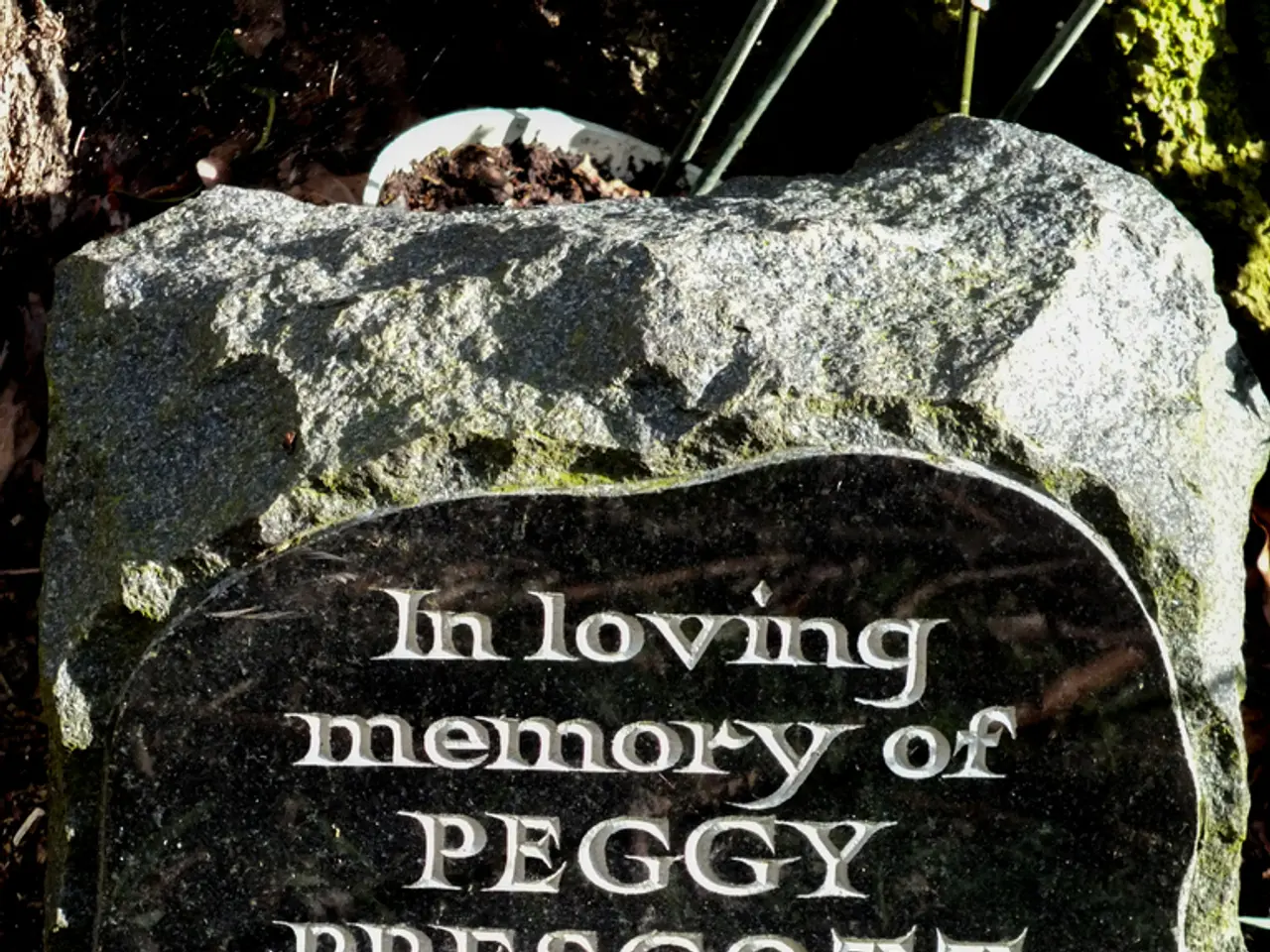Uncovered Ancient Finger Impressions in an Australian Cave Reveal Early Indigenous Ritual Practices
In the foothills of the Victorian Alps lies Waribruk Cave, a sacred site of profound cultural and spiritual significance for the GunaiKurnai people. Recent research has unveiled intricate finger grooves etched into the cave's walls, offering a unique window into the beliefs and practices of early Indigenous Australians [1][2].
These finger traces, believed to have been left by the mulla-mullung - the medicine people - reveal a deeply entwined relationship between culture, memory, and spirituality. The grooves, often found near glittering calcite microcrystal formations, suggest their importance in rituals involving sacred knowledge [1].
The finger impressions reveal intricate patterns of movement, including horizontal, vertical, and diagonal lines, suggesting deliberate gestures tied to ritualistic acts. Some grooves even hint at the involvement of children, aided by adults, capturing layered moments in time and cultural expression [1].
The cave's limestone walls and ceilings, softened by underground waters, allowed these delicate marks to be preserved for thousands of years. Estimated to be between 8,400 and 1,800 years old, these finger grooves offer a rare form of evidence that connects us directly to the past, serving as a cultural legacy that speaks to the sacred rituals of the GunaiKurnai people [3].
The absence of domestic artifacts in the cave supports the idea that Waribruk was not a place for ordinary living but a site for powerful cultural and spiritual activities. Traces of charcoal and small patches of ash were found nearby, suggesting that the ancestors ventured into the cave, carrying firesticks or small fires for light and warmth [3].
The finger grooves represent a connection to spiritual realms and a direct interaction with the environment, capturing the ancestors' relationship to the land, the sacred, and each other in stone. This discovery brings us closer to understanding how the First Nations people viewed their world and the forces they believed governed it [3].
Waribruk Cave is considered a sacred space by the GunaiKurnai people, tied to the spiritual practices of the mulla-mullung. Oral traditions link the cave to these powerful figures, who were believed to wield spiritual power through healing or cursing rituals [1].
The research, published by The Conversation and detailed in the journal Australian Archaeology, underscores the importance of these ancient sites in understanding the cultural and spiritual practices of early Indigenous Australians [1][2]. The finger grooves of Waribruk Cave offer new insights into the complex cultural legacy embedded in place and material culture, providing us with a glimpse into a rich and vibrant past.
- The finger grooves discovered in Waribruk Cave, likely left by the mulla-mullung, signify a merging of science, health-and-wellness, and cultural-travel, as they offer invaluable insights into the health practices and cultural beliefs of early Indigenous Australians.
- The intricate patterns etched into the cave walls, including fitness-and-exercise movements, underscore the importance of lifestyle practices evident in ancient rituals and highlight the significance of these sites for those studying anthropology and cultural-travel.
- These preserved artifacts, showcasing the connection between the GunaiKurnai people and their environment, not only enrich our understanding of theirworldview but also contribute to the realm of travel and leisure, as travelers seek authentic experiences rooted in cultural, spiritual, and historical significance.




